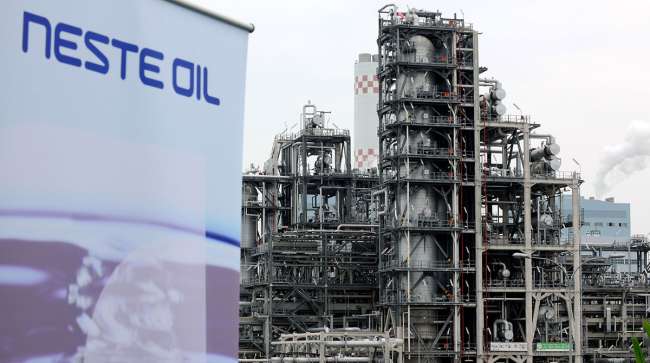Senior Reporter
Continued Testing, Cleaner Fuel Proposed for Diesel Engines

Diesel fuel still has a large role to play in achieving greater emissions reductions in heavy-duty trucks, experts said during a recent conference in San Francisco. Separately, they urged more in-use testing of engines to verify the gains, and increased use of renewable diesel, which is chemically similar to petroleum diesel, but cleaner.
While more progress is needed, the trucking industry has come a long way over the past 30 years, one industry executive said. He noted it would take 60 trucks with 2010 engines — which were the first to drastically slash discharges of particulate matter and nitrogen oxide — to equal the emissions of one truck from 1988.
“I think that is a good story,” said Tim Blubaugh, executive vice president of the Truck & Engine Manufacturers Association (EMA).

Blubaugh
“But maybe the flip side is that diesel engines are very durable. They are purchased for their long life, and because of that, currently about only 36% of the trucks on the road have the 2010 or newer emissions [reduction technologies],” he said
Blubaugh made his comments during an online presentation hosted Sept. 11 by the Diesel Technology Forum during the Global Action Climate Summit.
Chicago-based EMA, on behalf of its members, is cooperating with regulatory authorities on ways to produce even greater emissions reductions in the future, he said.
At the same time, EMA would like to see changes in emissions testing that would better represent real-world reductions, leading potentially “to less upfront certification requirements,” for manufacturers, he said.
“We believe the focus should shift [exclusively] to in-use [testing] that best ensures real-world emissions reductions. We also believe that resources spent on redundant [in-lab] certification requirements can be wasted, and could be better utilized to develop the emission control technologies,” Blubaugh said.
EMA is concerned with potential trade-offs for future engines with lowering emissions of greenhouse gases while also lowering emissions of NOx.
“Activities like regenerating a diesel particulate filter to ensure it’s functioning, or effective catalyst conversion of emissions into less harmful components — both require heat. And that heat in the aftertreatment comes at the expense of fuel efficiency. Fuel is required to produce that heat,” Blubaugh said.
EMA believes very strongly that a nationwide regulatory approach is crucial, he added. “Right now California is leading the way on potential reductions in NOx emissions. We feel very strongly that a one-state solution is not the way to go, and that it is less efficient in bringing products to market.”
Instead, the group advocates involving both the California Air Resources Board and the U.S. Environmental Protection Agency. “A 50-state solution is the most efficient, and will bring greater emissions reductions to California,” since 60% of the vehicle miles traveled by trucks in the state are by out-of-state vehicles, he said.
Meanwhile, EMA members are developing zero-emissions powertrains and vehicles, and bringing to market a wide variety of zero-emissions products, Blubaugh said. EMA members also are working with CARB on design certification requirements, sales requirements and purchase requirement programs for medium- and heavy-duty trucks.
Plus, greater use of renewable diesel fuel would help improve air quality, a fuel company executive said.
Another expert said renewable diesel could help reduce emissions even on pre-2010 engines.

Delahoussaye
“It is diesel fuel. It is certified as [ultra low-sulfur diesel] as well as CARB-certified diesel. But it is produced not from fossil crude oil, rather 100% renewable and sustainable raw materials,” said Dayne Delahoussaye, head of North American Public Affairs at Neste — the world’s largest producer of renewable diesel refined from waste and residues.
You can take oils, fats and greases, he said, and purify and refine them into a hydrocarbon molecule, the same molecule as traditional diesel except much cleaner — a clear fuel. “When you have control of your materials coming in, you can have a much more consistent and cleaner product,” he said.
Delahoussaye added that renewable diesel is not biodiesel, which is processed differently.
Biodiesel is produced only from lipids — such as vegetable oils, animal fats, grease and algae. Renewable diesel is produced from lipids and cellulosic biomass, such as crop residues, woody biomass and dedicated energy crops, according to the U.S. Department of Energy.
Delahoussaye said renewable diesel has a higher cetane number than fossil diesel. Cetane in diesel is somewhat analogous to octane in gasoline, with higher amounts required in certain engines.
Renewable diesel could be used in pre-2010 engines, too, he said. “There’s nothing you need to do to switch,” he said.





